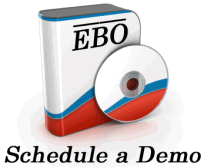49 CFR PART 26—PARTICIPATION BY DISADVANTAGED BUSINESS ENTERPRISES IN DEPARTMENT OF TRANSPORTATION FINANCIAL ASSISTANCE PROGRAMS
§ 26.1 What are the objectives of this part?
§ 26.3 To whom does this part apply?
§ 26.5 What do the terms used in this part mean?
§ 26.7 What discriminatory actions are forbidden?
§ 26.9 How does the Department issue guidance and interpretations under this part?
§ 26.11 What records do recipients keep and report?
§ 26.13 What assurances must recipients and contractors make?
§ 26.15 How can recipients apply for exemptions or waivers?
§ 26.21 Who must have a DBE program?
§ 26.23 What is the requirement for a policy statement?
§ 26.25 What is the requirement for a liaison officer?
§ 26.27 What efforts must recipients make concerning DBE financial institutions?
§ 26.29 What prompt payment mechanisms must recipients have?
§ 26.31 What information must you include in your DBE directory?
§ 26.33 What steps must a recipient take to address overconcentration of DBEs in certain types of work?
§ 26.35 What role do business development and mentor-protégé programs have in the DBE program?
§ 26.37 What are a recipient’s responsibilities for monitoring the performance of other program participants?
§ 26.39 Fostering small business participation.
§ 26.41 What is the role of the statutory 10 percent goal in this program?
§ 26.43 Can recipients use set-asides or quotas as part of this program?
§ 26.45 How do recipients set overall goals?
§ 26.47 Can recipients be penalized for failing to meet overall goals?
§ 26.49 How are overall goals established for transit vehicle manufacturers?
§ 26.51 What means do recipients use to meet overall goals?
§ 26.53 What are the good faith efforts procedures recipients follow in situations where there are contract goals?
§ 26.55 How is DBE participation counted toward goals?
§ 26.61 How are burdens of proof allocated in the certification process?
§ 26.63 What rules govern group membership determinations?
§ 26.65 What rules govern business size determinations?
§ 26.67 What rules determine social and economic disadvantage?
§ 26.69 What rules govern determinations of ownership?
§ 26.71 What rules govern determinations concerning control?
§ 26.73 What are other rules affecting certification?
§ 26.81 What are the requirements for Unified Certification Programs?
§ 26.83 What procedures do recipients follow in making certification decisions?
§ 26.85 Interstate certification.
§ 26.86 What rules govern recipients’ denials of initial requests for certification?
§ 26.87 What procedures does a recipient use to remove a DBE’s eligibility?
§ 26.89 What is the process for certification appeals to the Department of Transportation?
§ 26.91 What actions do recipients take following DOT certification appeal decisions?
§ 26.101 What compliance procedures apply to recipients?
§ 26.103 What enforcement actions apply in FHWA and FTA programs?
§ 26.105 What enforcement actions apply in FAA programs?
§ 26.107 What enforcement actions apply to firms participating in the DBE program?
§ 26.109 What are the rules governing information, confidentiality, cooperation, and intimidation or retaliation?
Appendix A to Part 26—Guidance Concerning Good Faith Efforts
Appendix B to Part 26—Uniform Report of DBE Awards or Commitments and Payments Form
Appendix C to Part 26—DBE Business Development Program Guidelines
Appendix D to Part 26—Mentor-Protégé Program Guidelines
Appendix E to Part 26—Individual Determinations of Social and Economic Disadvantage
Appendix F to Part 26—Uniform Certification Application Form


